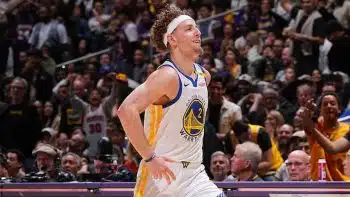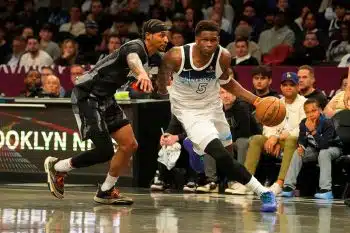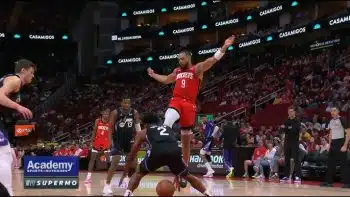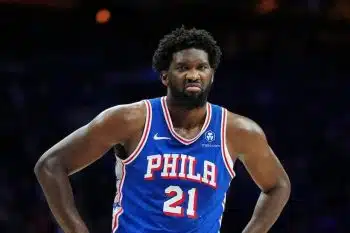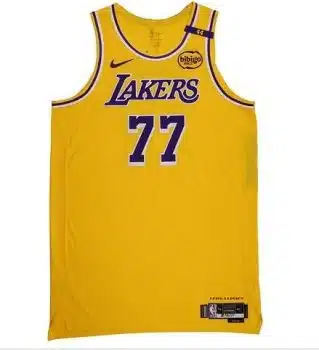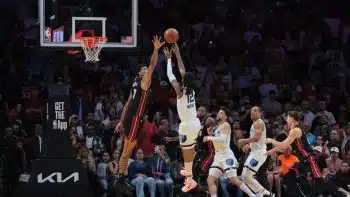NBA
Are The Clippers’ Big Men Ready To Defend At A Championship Level?
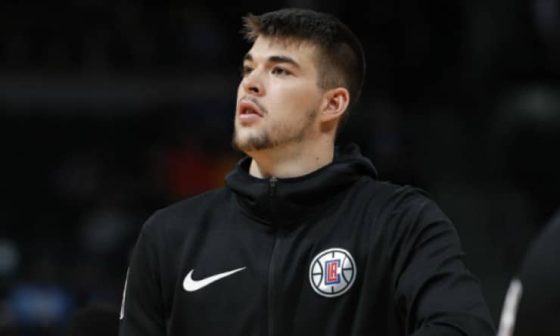
Defense is supposed to be the rebuilt LA Clippers’ championship trump card.
Not since Scottie Pippen and Michael Jordan swarmed for the Chicago Bulls has a team boasted a scarier pair of wing defenders than Paul George and Kawhi Leonard. With Patrick Beverley around to hound ball handlers for 94 feet, there’s an argument to be made that neither perennial All-Defensive candidate is the Clippers’ top defensive player. Moe Harkless can capably guard four positions, Rodney McGruder offers Doc Rivers another quality option on star wings and JaMychal Green thrived in last year’s playoffs while moonlighting as a switchable small-ball five.
In terms of individual defensive talent, no team in the league can match the Clippers, and it’s not particularly close. When LA is engaged, revving up its defensive intensity to full-throttle, there will be times when it seems impossible for opponents to crease the paint, let alone put points on the board efficiently.
But defense at basketball’s highest level can’t only be about the perimeter, especially in the modern NBA, where rule changes prioritizing free movement have propelled the league toward an offensive revolution. If the Clippers live up to expectations and play into early summer, there will inevitably come stretches when the league’s most dangerous group of defenders just isn’t enough – leaving Ivica Zubac and Montrezl Harrell to pick up its slack at the rim.
It’s been proven over the majority of the decade that a superstar big man isn’t a prerequisite for hoisting the Larry O’Brien Trophy. Even innately understated two-way impact players like Marc Gasol, Draymond Green, late-stage Tim Duncan and Chris Bosh weren’t the engine behind their championship teams reaching the top of the mountain. Superstar wings own that distinction now, and the Clippers have two of them.
Still, it would be remiss to submit that Zubac and Harrell aren’t relative question marks given the role they’ll be forced to play on the game’s biggest stage, against its greatest talents.
Harrell is something close to a known commodity by now after a breakout 2018-19, in which he finished second to teammate Lou Williams for Sixth Man of the Year. He’ll come off the bench again this season, earning significant minutes and likely manning the middle whenever LA needs a jolt offensively – times that will be in shorter supply with Leonard and George around.
The Clippers would be best served by Harrell proving himself worthy of even more playing time, but he’s inherently limited defensively due to his lack of size. Harrell was actually better as a rim-protector last season than the narrative indicates; opponents shot a perfectly acceptable 56.3 percent against him at the rim, per NBA.com. There’s a lot of noise to that number, though, and the more telling one of Harrell’s true defensive value is the Clippers surrendering nearly eight more points per 100 possessions when he was on the court following the trade for Zubac in early February.
Harrell is an eye-popping leaper, and long arms allow him to play bigger than his height when he’s in proper position. But his inevitable size deficit prevents him from contesting some shots around the rim that most centers affect and presents just as big an issue with regard to the defensive glass, an area LA struggled last season when he was on the floor. Compounding matters is Harrell’s inability to hold up one-on-one against elite interior scorers, or switch onto dynamic ball handlers without negative recourse.
Defense is the chief justification behind the Clippers re-signing Zubac to a four-year, $28 million contract in July. He might have been their most valuable player on that side of the ball after being stolen from the Los Angeles Lakers at the trade deadline, filling an obvious hole on the roster that Harrell and the departed Marcin Gortat couldn’t.
“We have a rim-protector. Bottom line,” Rivers told The Athletic’s Jovan Buha in late March. “Trezz does it at times. But Zu is a true rim-protector, and Zu has been great at it. So that’s why [we’ve improved on defense].”
Zubac hardly has the reputation of a “true rim-protector” two seasons into his career. He’s not Rudy Gobert, and never will be. But Rivers’ description of his team’s starting center is accurate nonetheless, and the simplest reason to believe concerns about LA’s interior defense will be proven moot.
Standing seven-feet tall with broad shoulders and a deceptively long wingspan, Zubac possesses the size necessary to be an impactful deterrent at the rim. He’s quick in short areas, too, rarely taking false steps, and has natural timing – both as a pure shot-blocker and vertical obstacle – when penetrators rise to finish.
Opposing players shot 51.8 percent against Zubac at the rim last season, the league’s fourth-best mark, per NBA.com. Just as important is his ability to challenge those prized attempts in the first place. Among bigs who averaged fewer than 20 minutes per game, Zubac contested more shots taken from the restricted area than any player in basketball – perhaps the most significant factor separating him from Harrell defensively.
To a man, Zubac’s teammates rave about his play on that side of the ball, and their praise is supported by individual and team-wide statistics, not to mention the eye test. He truly made a huge difference for the Clippers down the stretch of the regular season. But the playoffs exposed Zubac’s subpar foot speed in space and LA’s conservative defensive scheme, a combination that could be exploited once again when it matters most.
Knowing he was ill-equipped to keep up with the likes of Steph Curry, Klay Thompson and Kevin Durant on the perimeter, the Clippers tasked Zubac with sticking to the paint and roaming far off his primary assignment against the Golden State Warriors to muck up off-ball screening action. He fared well in that role for the most part, and so did LA’s dogged perimeter defenders. But a few glaring mistakes early in games drew Rivers’ ire, leading him to bench Zubac entirely midway through the series, instead rolling with Harrell and Green at center.
This mistake from early in Game 1 nearly sent Rivers into a conniption.
Those gaffes were few and far between for Zubac after he came over from the other side of Staples Center. The capacity to diagnose plays from the paint, putting out off-ball fires and sussing out false action, is one of his best traits as a defender.
The question is how far such a restricted defensive identity can take Zubac and, by proxy, the Clippers. The Warriors’ dismantled juggernaut has required every team with legitimate title aspirations to field bigs comfortable switching onto the world’s best shooters – or like LA did in April, fail trying something different.
That necessity may not exist anymore. Steph Curry will be more flammable this season than any since 2015-16, when he won unanimous MVP, but Golden State doesn’t have enough supporting firepower – at least with Klay Thompson sidelined until February or March – to compete for another title. James Harden remains inevitable, and every team in the league will cater their defensive coverage to his singular skill set. Either way, the Clippers should be confident they can put up points with the Houston Rockets. The Lakers and Milwaukee Bucks are driven by another type of alpha dog, and so are the massive, anomalous Philadelphia 76ers.
Centers on teams with championship hopes probably don’t need to step out to the arc for 48 minutes anymore, a development that helps LA as much any other contender given its personnel up front. But the likes of Harden, LeBron James, Giannis Antetokounmpo, and Joel Embiid will almost certainly be too much for Harrell to handle near the rim. Is it safe to say the same of Zubac?
While the most common perception of his game suggests as much, the most recent evidence does otherwise. The real answer to that question won’t just decide who finishes games for the Clippers next April, May and June, but is also poised to help decide the NBA’s next champion, too.
